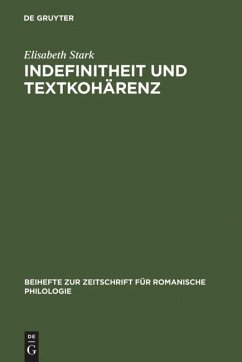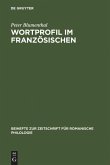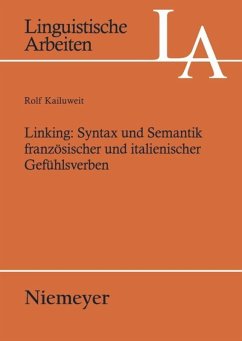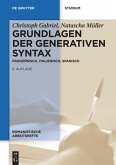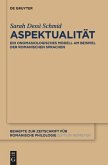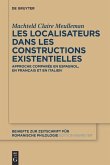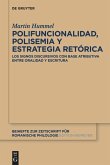The subject of this extensive corpus-based study is the distribution and the functional role played by a total of 22 indefinite nouns in 9 key texts for Italian linguistic and literary history dating from the late 13th to the early 16th century (including »Novellino«, »Decameron«, and Bembo's »Prose«). The central issue is the semantic and functional differentiation of these indefinite forms as encountered in the texts. This is pinpointed by way of comparison with their Latin etyma and modern Italian equivalents. A further essential aspect is the problem of the grammaticalization of indefinite noun determinants in Italian and the Romance languages in general.
Die Untersuchung hat die Distribution und funktionale Auslastung von 22 Indefinita in neun Schlüsseltexten der italienischen Sprachgeschichte vom 13. bis zum Anfang des 16. Jahrhunderts (u.a. Dantes »Convivio«, Boccaccios »Decameron«, die »Libri della famiglia« von Alberti, Bembos »Prose della volgar lingua«) zum Gegenstand. Fast 9000 Einzelbelege werden in den nach drei Zeiträumen und Diskurstraditionen kreuz-klassifizierten Texten anhand von mehr als 40 grammatischen und textuellen Kategorien analysiert und bezüglich ihres Zusammenhangs mit Generizität, Prädikativität, Negation, Spezifizität und Zählbarkeit diskutiert. Die Analysekategorien entstammen der aktuellen referenzsemantischen Literatur und werden erstmals in einer empirischen diachronen Studie in ihrer Gesamtheit auf eine große Zahl konkreter Textbelege angewendet. Im Zentrum stehen die Frage nach der semantischen und funktionalen Ausdifferenzierung der Indefinita in den Texten im Vergleich zu ihren lateinischen Etyma und neuitalienischen Entsprechungen sowie insbesondere das Problem der Grammatikalisierung indefiniter Nominaldeterminanten im Italienischen und Romanischen. Die Motivation der Artikelentstehung im Romanischen im indefiniten Bereich wird in der Leistung der unbestimmten romanischen Artikel, einer neuen Art von >Nominalklassifikation< im weiteren Sinne als Kompensation der lateinischen Genus- und Numerusflexion, identifiziert.
Die Untersuchung hat die Distribution und funktionale Auslastung von 22 Indefinita in neun Schlüsseltexten der italienischen Sprachgeschichte vom 13. bis zum Anfang des 16. Jahrhunderts (u.a. Dantes »Convivio«, Boccaccios »Decameron«, die »Libri della famiglia« von Alberti, Bembos »Prose della volgar lingua«) zum Gegenstand. Fast 9000 Einzelbelege werden in den nach drei Zeiträumen und Diskurstraditionen kreuz-klassifizierten Texten anhand von mehr als 40 grammatischen und textuellen Kategorien analysiert und bezüglich ihres Zusammenhangs mit Generizität, Prädikativität, Negation, Spezifizität und Zählbarkeit diskutiert. Die Analysekategorien entstammen der aktuellen referenzsemantischen Literatur und werden erstmals in einer empirischen diachronen Studie in ihrer Gesamtheit auf eine große Zahl konkreter Textbelege angewendet. Im Zentrum stehen die Frage nach der semantischen und funktionalen Ausdifferenzierung der Indefinita in den Texten im Vergleich zu ihren lateinischen Etyma und neuitalienischen Entsprechungen sowie insbesondere das Problem der Grammatikalisierung indefiniter Nominaldeterminanten im Italienischen und Romanischen. Die Motivation der Artikelentstehung im Romanischen im indefiniten Bereich wird in der Leistung der unbestimmten romanischen Artikel, einer neuen Art von >Nominalklassifikation< im weiteren Sinne als Kompensation der lateinischen Genus- und Numerusflexion, identifiziert.

